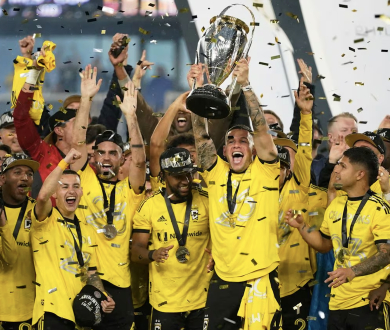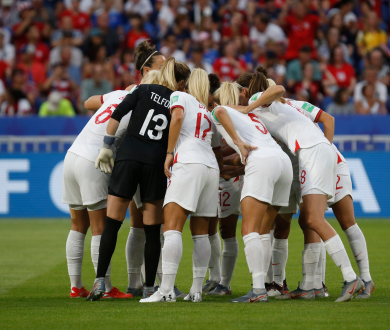
Modernizing the role of HR Departments to Build High-performing Sports Teams and Organizations
In the ever-evolving realm of sports, the role of HR departments has reached new heights, driven by the heightened expectations of both owners and C-suite executives, as well as the staff within these organizations. On one hand, owners and executives are demanding increased fan engagement, higher attendance, stronger brands, and greater revenue. On the other hand, the staff expects more from sports teams and their leaders, such as improved transparency, flexibility, work-life balance, and better compensation. This paper delves into the ways in which sports organization HR departments have responded to these escalating expectations, exploring their strategic initiatives to attract, develop, and retain high-performing talent in an industry where success hinges on effectively meeting the demands of both stakeholders. From innovative talent management practices to fostering a culture of employee well-being, HR professionals have embraced the challenge of balancing the aspirations of owners and executives with the evolving needs and desires of their workforce, propelling sports organizations towards greater achievements.
Below are some ways we have seen sports organization HR departments transform and initiatives taken to attract, build and grow high performing talent.
Three questions to building a strong talent pathway:
- “What do we value?”
- “How do we develop what we value?”
- “How do we measure what we value?”
Disrupt the traditional talent pipeline
Sports organizations have for a long time enjoyed the “sports discount” when hiring talent. This of course refers to the ability to attract talent for less pay because employees get to work in the one thing they love most, sport. While this is attractive financially in the short term, long term, this strategy is suboptimal.
The approach to hire the people from the same background is common both the front office and business side of the organization. In the front office, previous players are often hired into senior roles with no evidence or capability to deliver on the role, or strong management experience required at such high levels. This is not too dissimilar to the business side of the team, where junior staff have failed upwards to reach senior positions.
While there are some roles that do require specific league / team knowledge to avoid operational chaos (e.g., CFO roles), for many lower levels (i.e. SVP and below), taking a risk on outside industry talent is a worthwhile investment. One way to disrupt this talent pipeline is look for four measures of success:
Competence - Are they excellent at the required ‘skill’ (regardless of previous industry experience)?
Ability to learn - Are they willing to learn and have a good attitude towards professional growth?
Growth potential - Do they hold characteristics to be a good manager / leader in the future?
Values - Are values aligned with the organization?
Become an organization that looks for and is attractive to outside industry talent.
Investment into management and leadership training
Investing in management and leadership training is another missing ingredient in sports organizations which should be prioritized to develop their employees and prepare them for leadership roles.
Many employees in the sports industry have high levels of tenure (20-30 years in some roles), which means they are well-versed in their job functions. However, being tenured does not guarantee good management or leadership skill. As a result, many sports staff lack the formal training for management to prioritize time, talent and relationships, and key leadership qualities, including empathy and communication skills.
Without proper training, these employees may not be equipped to manage and lead teams effectively, resulting in poor team performance and reduced productivity. By investing in management and leadership training, sports organizations can develop a pipeline of effective leaders who can improve team performance, boost employee morale, and drive organizational success.
One CEO asked, “what if I spend all this money on the talent and they leave?” The response was simple, “what if you don’t and they stay?”
Quarterly manager and leadership seminars should become a compulsory part of all manager and potential leader performance plans.
Recognize that not everyone deserves to be a manager or leader
The sports management and leadership gap in sports is more pronounced today because there has been a lack of understanding of what it means to be a manager or a leader (i.e. being promoted). A poor tactic that has existed in the industry for decades has been promoting people based on time, not performance or potential. For an HR department to prioritize leadership and management, investment is one thing, but being clear on what a “a good leader” means, what they look like, and what it takes to get there is another thing. Give employees opportunities to learn, grow and be the best they can be – but recognize that not everyone can be a manager or leader.
Rewarding people based on time alone is a poor tactic, as it accepts mediocrity as a path to success. Healthy turnover as a result can be a good thing.
Continually updating the career / performance pathways
It is no longer acceptable for HR departments to be focused on what skills are required for now, but also what skills will be required in the next 12 - 18 months. For the majority of teams we work with, HR departments have maintained the role specifications for a position, but have also recognized the expectations and needs of the business change. We have seen that this requires HR to re-think employee pathways, roles, and responsibilities every 2-3 years given the speed of change within the industry and business environment. Future skills that relate to technology, problem-solving, data, and other emerging trends should alter the job spec and capability requirements for future roles.
Hiring under a role specification that is longer than 2 years old could create obsolete resources in the organization.
Teach and “build schools”
Investing in leaders to be excellent teachers is also a key factor in creating high-performing teams. Leaders should be spending 20% of their time upskilling staff or it runs the risk of stagnating. There are multiple methods and frameworks available for leaders to build up their teaching skillset, but it is important to note that good teaching requires leaders to be more effective that just their engagement 1:1 with others. This of course limits your teaching ability as you are limited by time.
For long term success, it is worthwhile taking a more wholistic approach as a teacher - this is called the ‘Build your School’ Principle. This focuses on leaders imagining their department or organization as a school. What does a school need? It needs levels, it needs curriculum, it needs exposure to different classes, it needs different ways to engage students, it needs to find alternate ways of offering feedback to learn, etc. The one good thing about schools - they last!
Become an excellent teacher, build your school and leave a lasting impression on your organization and your colleagues.
Raise the floor
Finally, off-boarding is a crucial aspect of creating high-performing teams. While sports organizations are about team-building and inclusivity, there are times when some people may be unable to meet the team needs. Identifying poor performance on skill as well as values/culture is one indicator that help us find underperforming talent. While everyone deserves a chance to rectify, learn and grow through performance plans, do not be afraid to also have in place exiting plans. If you are an organization truly committed to values, performance or culture, you also need to be unapologetic about raising the floor.
You only need 1 – 2 toxic people in the organization for everyone else to suffer. Raising the bar at the top is simply not enough.
Above are five of many examples used to help build high performing teams under HR. However it is important to recognize that these initiatives are not mutually exclusive, nor as simple as “rolling them out” in isolation. They require assessments of talent, organizational structure reviews, change management plans, and recalibrations of exiting policies, plans and curriculum. Taking a purposeful approach to these could be the difference between attracting, retaining, and building great talent at all levels across the organization, and not.
Modernizing the HR function is essential for sports organizations to create high-performing teams. Sportsology Group is an experienced partner that can help organizations improve their HR processes, optimize team performance, and create better employee experiences. With their help, sports organizations can build high-performing teams that are agile, resilient, and successful.











